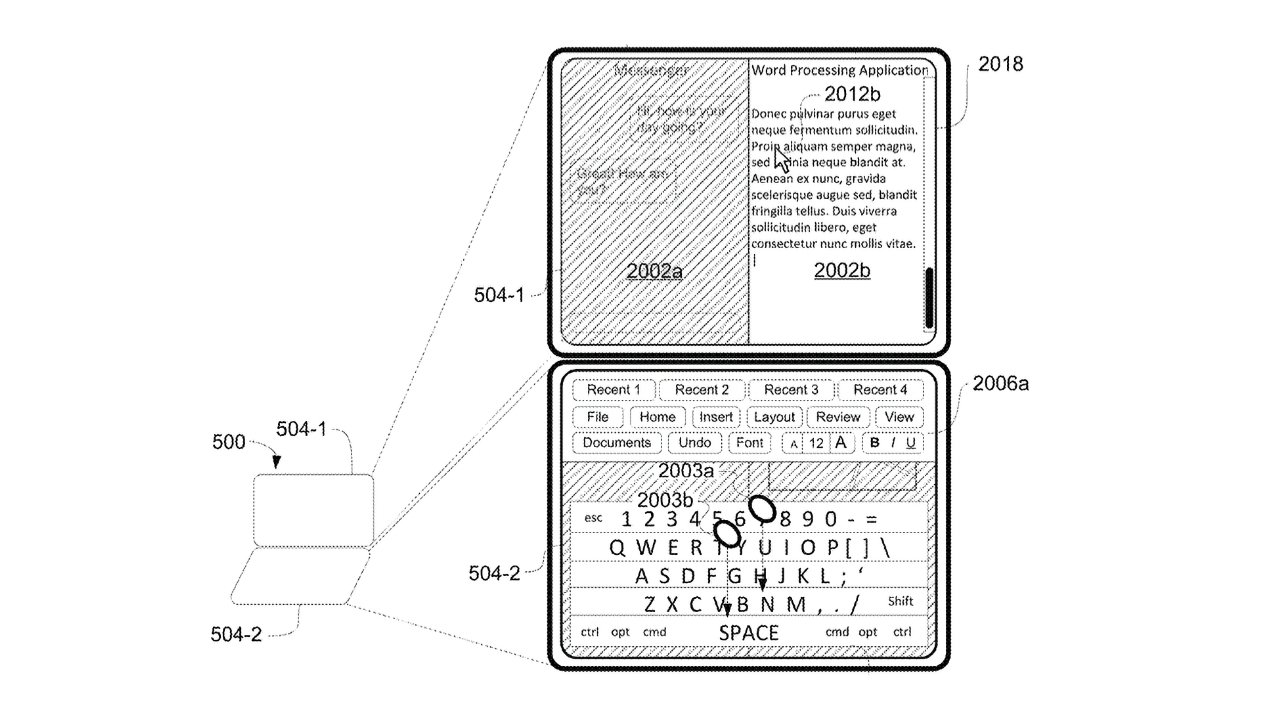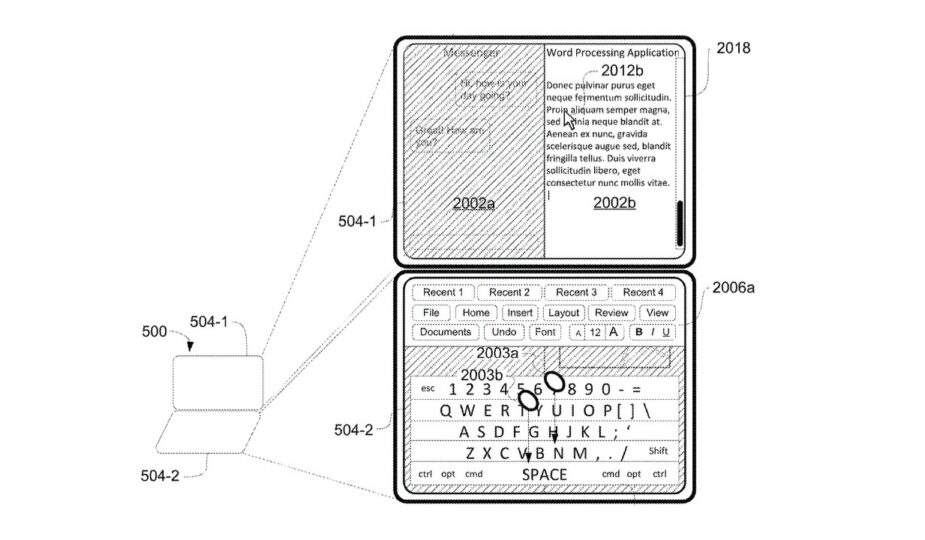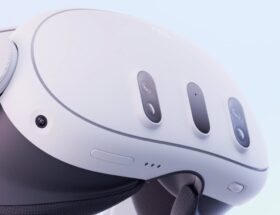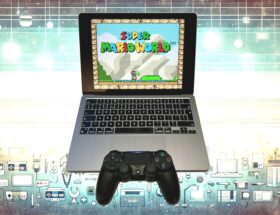A foldable device may have two screens, the bottom of which one acts as “soft keyboard”;
 0 Facebook x.com Reddit
0 Facebook x.com Reddit
Dual-screen foldable devices have potential beyond simply increasing the display area. Apple is taking a deep dive into how to make the interfaces of a foldable iPhone, iPad, or all-screen MacBook Pro more than the sum of its parts.
It's no surprise that Apple is exploring the iPhone Fold or foldable iPad. And of course, he had foldable laptops, from the PowerBook 100 to today's MacBook Pro.
However, this newly issued patent, titled “User Interfaces for Multiple Display Devices,” may even replace each of these devices. The patent, containing 335 drawings and block diagrams, ultimately describes a device consisting of two screens folded in the middle, like the current MacBook Pro.
While this is in line with many previous rumors and patents regarding foldable devices, this particular patent covers more than that. It's about how Apple can do its typical thing: come up with an idea late, but do it so much better than anyone else that everyone else follows.
Particularly when you have two screens on one device, there is a problem with them working together. The Mac has long supported multiple screens, and Apple is smart to move apps if the previously used display is no longer available.
Apple also introduced Universal Control to combine the screens of completely different devices. This new patent concerns intelligently understanding what screens are available for foldable devices and potentially replacing items such as keyboards.
However, Apple is taking the typical patent approach of trying to make this proposal cover as wide a range of capabilities as possible, so it does apply to devices that have keyboards, joysticks, etc. Just when you Reading the details and studying the diagrams, it's hard to imagine where all this might go.
Although the drawings generally look like a foldable iPhone or perhaps an iPad, Apple is keen for you and future patent lawyers to understand that this means this applies to laptops too — and even desktop computers.
“The device may be a portable communications device, such as a mobile phone, that also includes other functions, such as PDA and/or music player functions,” the patent states. “It should also be understood that in some embodiments, the device is not a portable communications device, but is a desktop computer with a touch surface (e.g., a touch display and/or touchpad).”
In each embodiment shown in the patent, this proposed device is one display screen and one touch screen. It's not at all clear why Apple insists on this distinction, except that it has traditionally opposed MacBook displays being touchscreen.
The bottom screen may display items that can be clicked to select, which will then change the readable details on the top screen.
Whether or not the this difference or sometime in the future iteration allows users to tap on any screen, the 140,000+ word patent struggles to describe what appears to be an easily summarized idea.
The idea is that instead of a regular keyboard on a MacBook-like device, you get a screen. Interestingly, this screen “optionally has a video resolution greater than 100 dpi,” Apple says, “[or] a video resolution of approximately 160 dpi.”
This is the only mention of the resolution of the touchscreen replacing the keyboard, or the screen above it, presumably with a higher resolution.
Apple expects users to look primarily at the top screen of the display as they “contact [the] touchscreen as needed using any suitable object or appendage, such as a stylus, finger, etc.” . ” So the bottom touch display can switch between thumbnail, trackpad, or keyboard modes.
Whatever the touch display is used for, Apple pays close attention to what the user sees on the display screen. For example, “if the visual effect includes a display in a vibrant color, the cursor is additionally updated to display in a different color.
Apple is not only a dual-screen device, but also a top display.” , on which you can run multiple applications.
There are many descriptions of how the cursor changes color or animates, but the goal is always to “make it easier for the user to find and thus use the cursor… which further reduces power consumption and increases the battery life of the electronic device, allowing the user to use the electronic device more quickly and efficiently
Apple wants our fingers or styluses to tap and draw on the bottom screen while.” our attention is completely focused on the top display. He wants us to look at the device as a whole and not consider which screen we place which element on.
This patent belongs to seven inventors. They include Thomas Stephen Hulbert, whose previous work at Apple included updating the display based on where the user is standing or looking.
Follow AppleInsider on Google News.










